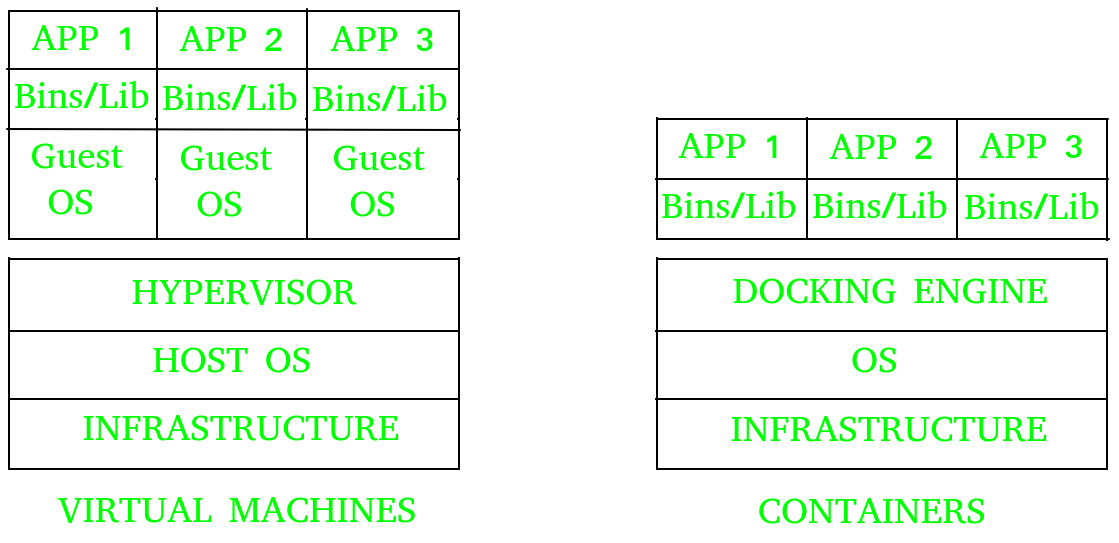虚拟机和容器是在单个平台上部署多个隔离服务的两种方式。
虚拟机:
它运行在称为虚拟机管理程序的模拟软件之上,该软件位于硬件和虚拟机之间。管理程序是启用虚拟化的关键。它管理物理资源到虚拟机的共享。每个虚拟机都运行自己的客户操作系统。与容器相比,它们的敏捷性和可移植性较差。
容器:
它位于物理服务器及其主机操作系统的顶部。他们共享一个通用的操作系统,需要关心和提供错误修复和补丁。与虚拟机相比,它们更灵活,具有更高的可移植性。

让我们看看虚拟机和容器之间的区别。
| SNo. | Virtual Machines(VM) | Containers |
|---|---|---|
| 1 | VM is piece of software that allows you to install other software inside of it so you basically control it virtually as opposed to installing the software directly on the computer. | While a container is a software that allows different functionalities of an application independently. |
| 2. | Applications running on VM system can run different OS. | While applications running in a container environment share a single OS. |
| 3. | VM virtualizes the computer system. | While containers virtualize the operating system only. |
| 4. | VM size is very large. | While the size of container is very light; i.e. a few megabytes. |
| 5. | VM takes minutes to run, due to large size. | While containers take a few seconds to run. |
| 6. | VM uses a lot of system memory. | While containers require very less memory. |
| 7. | VM is more secure. | While containers are less secure. |
| 8. | VM’s are useful when we require all of OS resources to run various applications. | While containers are useful when we are required to maximise the running applications using minimal servers. |
| 9. | Examples of VM are: KVM, Xen, VMware. | While examples of containers are:RancherOS, PhotonOS, Containers by Docker. |